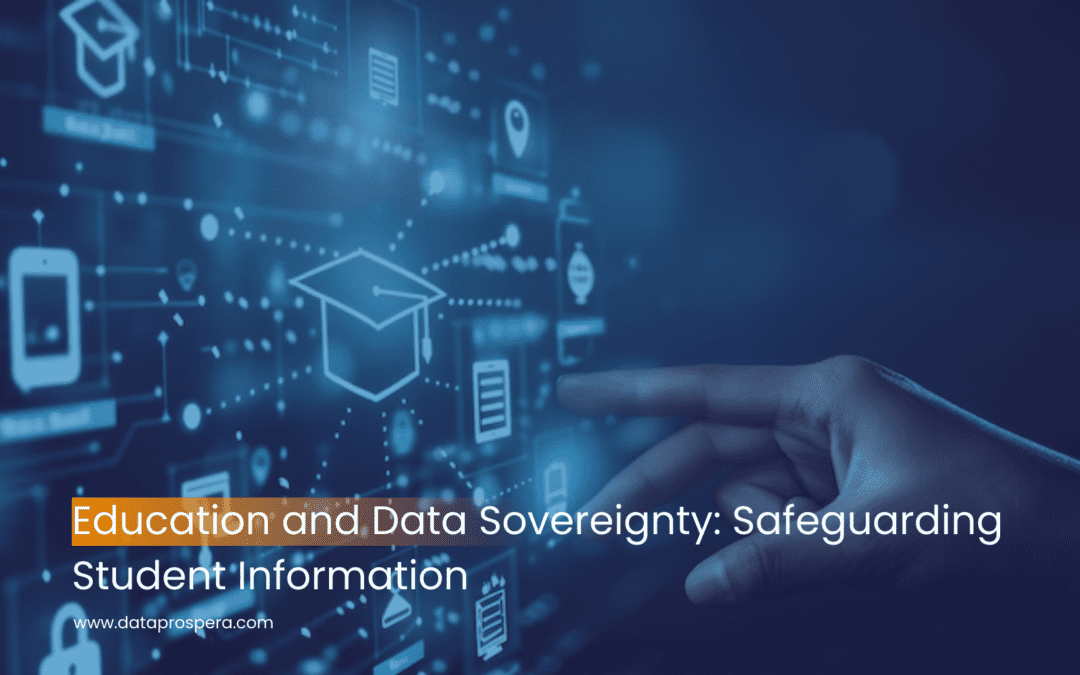In today’s digital educational landscape, the protection of student data has become paramount. As educational institutions increasingly rely on technology, ensuring data sovereignty—that is, the control and protection of data within a specific jurisdiction—has emerged as a critical concern. This blog explores the challenges and solutions related to safeguarding student information in the context of data sovereignty.
1. Understanding Data Sovereignty in Education
Data sovereignty refers to the concept that information is subject to the laws and governance structures within the nation it is collected. In the educational sector, this means that student data collected by schools and universities must comply with the data protection laws of the country where the institution operates. With the globalization of education and the use of international cloud services, maintaining data sovereignty has become increasingly complex.
2. The Importance of Protecting Student Data
Student data encompasses a wide range of sensitive information, including personal identification details, academic records, health information, and behavioral data. Protecting this data is crucial for several reasons:
- Privacy Protection: Students have the right to privacy, and unauthorized access to their data can lead to identity theft and other malicious activities.
- Compliance with Laws: Educational institutions must adhere to data protection regulations such as the Family Educational Rights and Privacy Act (FERPA) in the U.S., which governs access to student education records. Wikipedia
- Maintaining Trust: Ensuring data security fosters trust among students, parents, and educators, which is essential for a conducive learning environment.
3. Challenges in Ensuring Data Sovereignty
Several challenges hinder the effective implementation of data sovereignty in education:
- Use of Third-Party Services: Schools often utilize third-party educational tools and cloud services that may store data in different jurisdictions, complicating compliance with local data protection laws.
- Lack of Awareness: Educators and administrators may not be fully aware of the data protection obligations and the importance of data sovereignty, leading to unintentional breaches.
- Rapid Technological Advancements: The fast-paced evolution of educational technology can outstrip the development of corresponding data protection policies and regulations.
4. Strategies for Safeguarding Student Information
To address these challenges, educational institutions can adopt the following strategies:
- Data Minimization: Collect only the data that is necessary for educational purposes to reduce the risk of exposure. EdTech Magazine
- Regular Audits: Conduct periodic audits of data storage and processing practices to ensure compliance with data protection laws.
- Staff Training: Educate staff and faculty about data protection principles and the importance of maintaining data sovereignty.
- Use of Localized Services: Prefer services that store data within the same jurisdiction as the institution to simplify compliance with local laws.
- Robust Data Governance Policies: Develop and enforce comprehensive data governance policies that outline procedures for data collection, storage, access, and deletion.
5. The Role of Policy and Regulation
Governments and regulatory bodies play a crucial role in enforcing data sovereignty through legislation and oversight. For instance, FERPA in the United States sets standards for the protection of student education records. Similarly, other countries have enacted laws to ensure that student data is handled responsibly and remains within national borders.Wikipedia
Conclusion
As education becomes increasingly digitized, safeguarding student information through data sovereignty is more important than ever. By understanding the challenges and implementing effective strategies, educational institutions can protect student data, comply with legal obligations, and maintain the trust of their communities.


Recent Comments